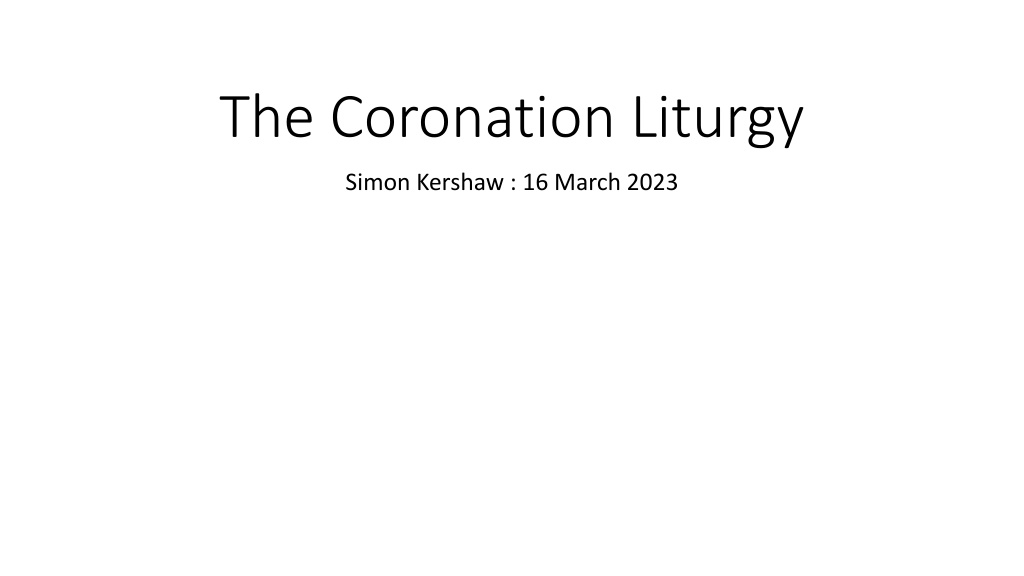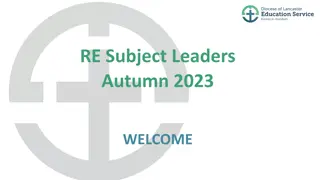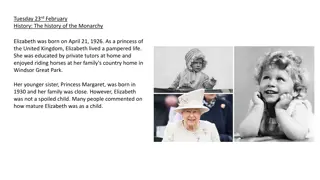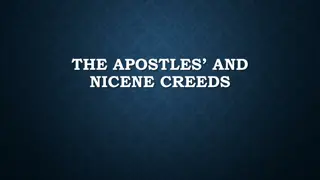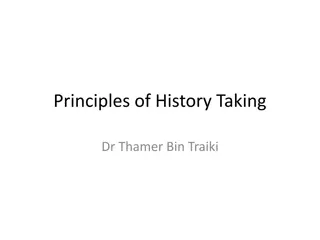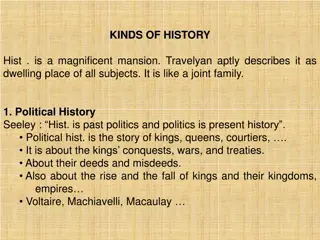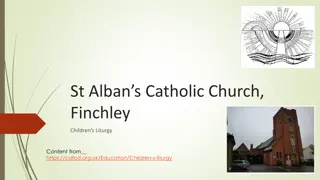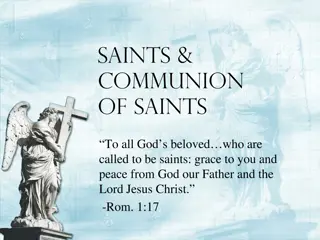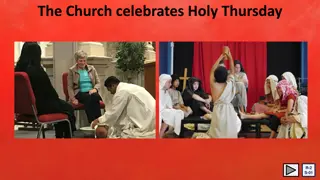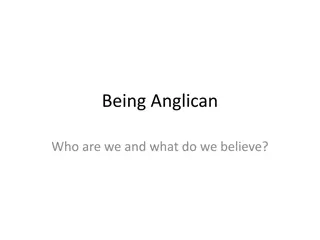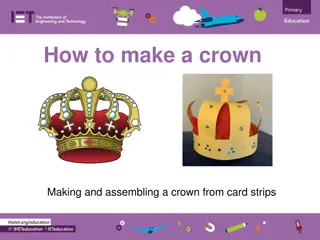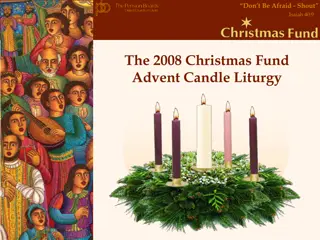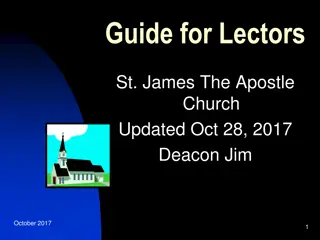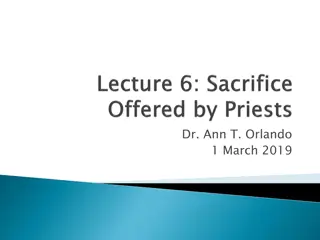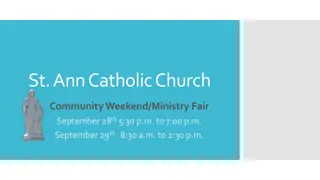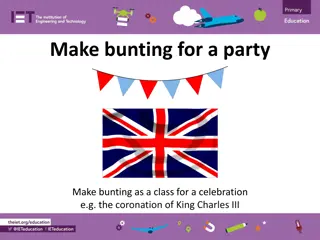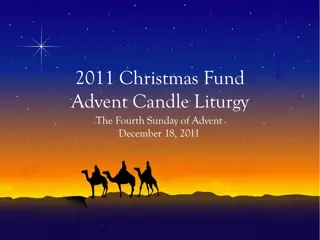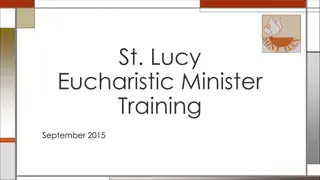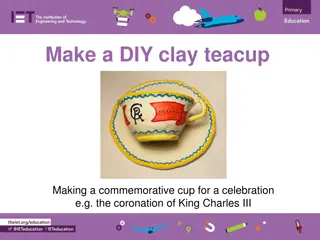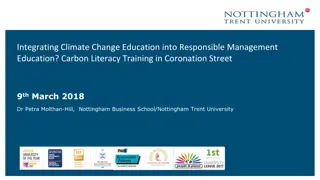Overview of Coronation Liturgy and History
The coronation liturgy, as detailed in the content, provides insights into the history, structure, personnel involved, and steps of the ceremony. It covers the history of coronations pre-973, revisions over the years, and the significant role of the Archbishop of Canterbury, supported by various bishops, in the coronation process. The structure of the ceremony since 1953 follows a specific order, including key elements such as recognition, oath, anointing, investiture, crowning, and enthronement. The involvement of different personnel and the sequence of events during a coronation are also outlined.
Download Presentation

Please find below an Image/Link to download the presentation.
The content on the website is provided AS IS for your information and personal use only. It may not be sold, licensed, or shared on other websites without obtaining consent from the author. Download presentation by click this link. If you encounter any issues during the download, it is possible that the publisher has removed the file from their server.
E N D
Presentation Transcript
The Coronation Liturgy Simon Kershaw : 16 March 2023
The Coronation Liturgy History Structure Personnel Steps of the Liturgy
Coronation History Pre-973 Coronation of Edgar in 973 Five Revisions or recensions Current text dates to 1689 for William III and Mary II Minor revisions for each subsequent Coronation
Five Recensions 1. 3 manuscripts earliest is Leofric Missal (written c.900) Might represent coronation of kings of West Sussex, 856; might be Egbert in 839; could be as early as close of 8th century 2. At least 5 versions Used in 973, and later perhaps until 1101 Might have been used in 901 (Edward the Elder) or 925 (Athelstan) 3. Might have been used in December 1066 (William I) or earlier; almost certainly in use by 1135 (Stephen) 4. Definitely in use in 1308 (Edward II); might have been used in 1274 (Edward I); exemplified by Liber Regalis 5. Revision for 1689 (William III and Mary II) Revised by Henry Compton, Bishop of London
Coronation Structure (1953) The Coronation rite has since 973 been set within the Eucharist Since 1603 (James I) this has been the Book of Common Prayer order Preliminary parts at the very start Main ritual after the creed (and sermon)
Coronation Structure (1953) Five main parts to the Coronation 1. The Recognition 2. The Oath, followed by the Presentation of the Bible 3. The Anointing 4. The Investiture, culminating in the Crowning 5. The Enthronement, followed by the Homage
Coronation Personnel The Archbishop of Canterbury presides, assisted by The Dean of Westminster The Bishop of Durham and the Bishop of Bath and Wells support the monarch Two other bishops support the Queen consort In 1953: the Moderator of the Church of Scotland presented the Bible
Coronation Structure (1953) Entrance Recognition, Oath, Presentation of Bible Introit, Collect for Purity, Collect Epistle, Gradual, Gospel, Creed Anointing, Investiture, Enthronement Queen consort s Coronation (Anointing, Investiture, Enthronement) Prayers, Confession, Consecration, Communion, post Communion Te Deum and Recess Final Procession
The Entrance The Litany The Entrance of the King and Queen Introit Anthem: Ps 122 (I was glad) Used since coronation of Charles I in 1626 Parry s setting written for coronation of Edward VII in 1902 Parry s setting incorporates the separate acclamation (Vivat) of the Scholars of Westminster School Communion vessels and regalia are placed upon the Altar
The Recognition The Archbishop presents the monarch to the congregation four times as your undoubted king The congregation respond God save King Charles Historically this was followed by the Prayer Book Litany, but not in 1937 or 1953
The Oath In 1937 and 1953 the Oath followed the Recognition Previously it had been placed after the Creed and Sermon, immediately before the Anointing The Sovereign promises: to follow and uphold the laws and customs of their Realms and to defend the Church The profession of the gospel, the Protestant religion established by law, the settlement, doctrine and government of the Church of England, the rights and privileges of the bishops and clergy and their churches
The Presentation of the Bible The Sovereign is presented with a Bible Introduced in 1689 for William III and Mary II Always took place immediately after the Crowning In 1953 Moved to be after the Oath The Moderator of the Church of Scotland presented the Bible and shared in the words of presentation
The Communion service begins With the Oath taken, the Communion service begins: Introit Anthem The Collect for Purity Kyrie (in 1953; before 1902 the Ten Commandments) Collect, Epistle, Gradual Anthem, Gospel Nicene Creed (Sermon, omitted in 1937 and 1953)
The Anointing Veni Creator is sung The Archbishop prays over the oil that the sovereign may be blessed Zadok the Priest is sung this has been sung ever since 973 Sovereign moves to King Edward s Chair Beneath a canopy the sovereign is disrobed Anointed in the form of a cross On the palms The breast The crown of the head
The Anointing The Sovereign puts on the Colobium Sindonis A white linen sleeveless full-length shift or undergarment Said to symbolise divesting worldly vanity, standing bare before God And the Supertunica A gold full-length tunic Inspired by the full dress consul uniform of the Byzantine Empire Robes originally taken from tomb of Edward the Confessor in 1269, destroyed in 1649
The Investiture: the Spurs and Sword The Spurs are touched to the king s heel, and returned to the Altar The Sword is brought, placed in the king s hand, then strapped on The king unstraps it and places it on the Altar as a gift A peer redeems it and carries it through the rest of the service
The Armills, Stole Royal and Robe Royal The Armills are bracelets which keep the Stole in place The Robe Royal is a great golden cloak Four-square Embroidered with roses, thistles and shamrocks and the imperial eagles of Byzantium
The Orb The Orb is a golden globe surmounted by a Cross Symbolizes the Cross ruling over the world Presented to the Sovereign s right hand and then given back and replaced on the Altar
The Ring The Ring Set with a sapphire and upon it a cross of cut ruby Placed upon the fourth finger of the sovereign s right hand
The Sceptre and The Rod with the Dove Next the sovereign is presented with the Sceptre The ensign of kingly power and justice Contains the Cullinan diamond, the largest diamond in the world Surmounted by the Cross And the Rod with the Dove The rod of equity and mercy Topped with a globe and the Cross, with the dove perching on top, wings outstretched
The Crowning The Dean brings the Crown The Archbishop solemnly places it on the sovereign s head The peers put on their coronets All the people repeatedly shout God save the King Trumpets sound A royal salute is fired at the Tower of London Church bells rung throughout the country The Archbishop solemnly blesses the newly- crowned sovereign
The Inthronization The sovereign is taken to the Throne by the Archbishop, other bishops and peers, and seated in it.
The Homage First the Archbishop and bishops pay Fealty Kneel before the sovereign Promise to be faithful and true The Archbishop, on behalf of all, kisses the king s left cheek Then the peers pay their homage First the royal dukes Then the other peers, by class (dukes, marquesses, earls, viscounts, barons) The first of each class touches the Crown and kisses the king s cheek
The Queens Coronation The Coronation of the Queen follows Similar to the king s, but simpler, and no special robes Anointing only on the head since 1902 The Ring The Crown Peeresses all put on their coronets The Sceptre and the Rod with the Dove The Queen takes her seat in her Throne, next to the King
The Offertory Offertory Anthem is sung In 1953 a congregational hymn, All people that on earth do dwell The sovereign offers The bread and wine An altar cloth A pound-weight of gold A queen consort makes her offering An altar cloth A mark-weight of gold
The Communion Service continues Prayer for the Church Militant Exhortation, General Confession and Absolution Comfortable Words The Sursum corda, proper preface, Sanctus Prayer of Humble Access Prayer of Consecration
The Communion Service continues The Communion The Archbishop, the Dean, the assisting bishops The king and queen There is no general communion
The Communion Service ends The Lord s Prayer The post-communion prayer O Lord and heavenly Father Glory be to God on High The Archbishop says the blessing
The Recess While the choir sing the Te Deum The king and queen move into St Edward s Chapel The king is disrobed of the coronation vestments Puts on a velvet and ermine mantle Puts on the Imperial State Crown instead of St Edward s Crown Takes the Sceptre and Orb (instead of the Rod with the Dove) The king and queen process out of the Chapel through the Abbey to the West Door
Picture credits and further information Sir George Hayter (1792 1871) The Coronation of Queen Victoria in Westminster Abbey, 28 June 1838 https://www.rct.uk/collection/405409/the-coronation-of-queen-victoria-in-westminster-abbey-28-june-1838 Fortunino Matania, R.I. (Italian, 1881 1963) Scenes from the coronation of King George VI https://www.christies.com/en/lot/lot-6057228 Laurits Regner Tuxen (1853 1927) The Coronation of King George V; Edward, Prince of Wales doing Homage https://www.rct.uk/collection/404478/the-coronation-of-king-george-v-edward-prince-of-wales-doing-homage Queen Mary s Crown https://www.rct.uk/collection/31704/queen-marys-crown Charles Robert Leslie (1794 1859) Queen Victoria Receiving the Sacrament at her Coronation, 28 June 1838 https://www.rct.uk/collection/406993/queen-victoria-receiving-the-sacrament-at-her-coronation-28-june-1838 See https://oremus.org/coronation for the text of all English / British coronations since 1689 Lambeth Palace Library catalogue of Coronation material https://lambethpalacelibrary.org/wp-content/uploads/2021/06/Research-Guide-Coronations.pdf
